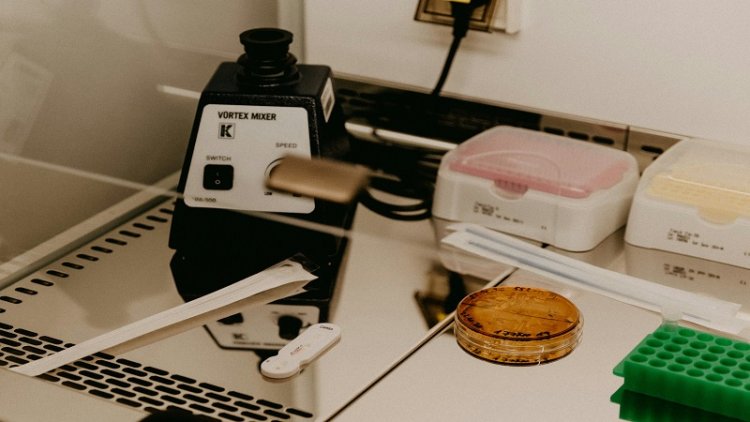The Interleukin Superfamily: Pillars of Immune Regulation
Advances in molecular biology and immunology will continue to uncover new insights into the interleukin superfamily, enabling innovative therapeutic strategies for immune-related diseases.

The interleukin (IL) superfamily comprises a diverse group of cytokines crucial for coordinating immune system responses. These molecules facilitate communication between immune cells and influence processes ranging from inflammation to tissue repair. Their pivotal role in health and disease makes them a significant area of focus in immunological research, including autoimmune disorders, cancer, and infectious diseases. This article explores what interleukins are, their various functions, the size of the interleukin family, and challenges and future directions.
What are Interleukins?
Interleukins are small proteins, commonly referred to as cytokines, that are produced primarily by white blood cells. Their name reflects their function, with "inter" signifying communication and "leukin" relating to leukocytes.
Initially identified as signaling molecules that assist in immune system communication, interleukins are now recognized for their broad involvement in cell growth, differentiation, migration, and survival. These proteins interact with specific receptors on cell surfaces, initiating signaling pathways that regulate immune and inflammatory responses.
Interleukins serve multiple critical functions across different areas of the immune system:
l Activating Immune Cells
Some interleukins, such as IL-2, are essential for activating and proliferating T cells, which play a central role in adaptive immunity.
l Driving Inflammation
Pro-inflammatory interleukins like IL-1 and IL-6 are responsible for initiating and sustaining inflammatory responses, crucial for fighting infections and repairing tissue damage.
l Modulating Immune Responses
Anti-inflammatory interleukins, including IL-10, help control excessive immune reactions, ensuring the immune system does not attack healthy tissue.
l Cell Communication
Interleukins act as messengers between different types of immune cells, enabling a coordinated defense against pathogens.
l Supporting Tissue Maintenance
Some interleukins, such as IL-22, contribute to tissue repair and the maintenance of epithelial barriers, which are essential for protecting against microbial invasion.
How Many Interleukins Are There?
The interleukin family consists of more than 40 identified members, each playing unique and overlapping roles in immune regulation. These cytokines are grouped into several families based on their structural similarities, receptor usage, and functions:
l Classical Interleukins: Early-discovered members like IL-1, IL-2, and IL-6 are key players in immune activation and inflammatory processes.
l IL-10 Family: Known for their anti-inflammatory properties, this family includes IL-10, IL-19, and IL-22, which help regulate immune homeostasis.
l IL-17 Family: These interleukins, including IL-17A and IL-17F, are involved in inflammatory responses and play a role in defending against fungal and bacterial infections.
This diversity allows interleukins to adapt to the immune system’s changing needs and challenges.
The Clinical Importance of Interleukins
The interleukin superfamily's extensive involvement in immune responses highlights its importance in health and disease. Dysregulation of interleukin activity is associated with various conditions, such as:
l Autoimmune Diseases: Excessive production of pro-inflammatory interleukins like IL-17 is implicated in diseases such as rheumatoid arthritis and multiple sclerosis.
l Cancer: Certain interleukins, such as IL-6 and IL-10, are linked to tumor growth, immune evasion, and the formation of new blood vessels to nourish tumors.
l Infections: Interleukins are vital for orchestrating responses to pathogens, though imbalanced activity can lead to harmful inflammation or immune suppression.
l Targeting interleukins has become a cornerstone of modern medicine. Therapies include monoclonal antibodies designed to block specific interleukins, such as IL-6 inhibitors for autoimmune diseases or IL-2 therapies to enhance immune responses in cancer patients.
Challenges and Future Prospects
Although much progress has been made, interleukin research remains complex due to the overlapping and sometimes contradictory roles of these molecules. A single interleukin can have varying effects depending on the context, cell type, and receptor it interacts with.
Future areas of study include:
l Developing drugs that selectively activate specific pathways to minimize side effects.
l Leveraging interleukin profiles to create personalized treatments for immune-related conditions.
Advances in molecular biology and immunology will continue to uncover new insights into the interleukin superfamily, enabling innovative therapeutic strategies for immune-related diseases.
References
l Dinarello, C. A. (2018). "Overview of the interleukin-1 family of ligands and receptors." Immunological Reviews, 281(1), 8-27.
l O'Shea, J. J., & Murray, P. J. (2008). "Cytokine signaling modules in inflammatory responses." Immunity, 28(4), 477-487.
l Korn, T., Bettelli, E., Oukka, M., & Kuchroo, V. K. (2009). "IL-17 and Th17 cells." Annual Review of Immunology, 27, 485-517.
What's Your Reaction?




















